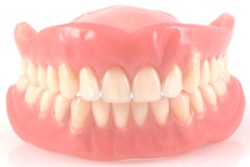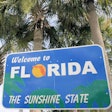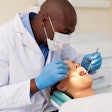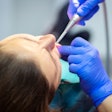
A new report details the shortcomings of many U.S. states in providing oral healthcare options for older Americans. Seventeen states received a "poor" rating by the report, an ominous sign for the baby boomer generation.
The report by Oral Health America (OHA), entitled "A State of Decay," blamed "limited access to dental insurance, affordable dental services, community water fluoridation, and programs that support oral health prevention and education," as the primary culprits in a complex web of issues hindering seniors' oral health. It suggested a number of solutions, including alternative workforce models, expanded Medicare and Medicaid coverage, and education for seniors and their caregivers.
A silver tsunami
Of particular concern to the report's authors is the "silver tsunami" of baby boomers who are turning 65 at a pace of 10,000 per day while only 2% have dental insurance. Furthermore, while the Patient Protection and Affordable Care Act (ACA) addresses the oral health of children, it does not cover oral care for seniors.
The report examines state-level data on five variables impacting older adult oral health:
- Adult Medicaid dental benefits
- Inclusion in state oral health plans
- Edentulism
- Dental health professional shortage areas (HSPAs)
- Community water fluoridation
The new report represents a focus shift from the report OHA issued in 2003, which evaluated Medicaid and private insurance reimbursements.
Seventeen states were assigned a "poor" rating for oral healthcare that was less than 50% of the best possible score. Two states, Minnesota and Maryland, were rated "excellent," with scores of 90% or better, while 10 states were rated "good," or between 70% and 89%, and 21 were rated "fair," with scores between 50% and 69% of the best possible score.
The scores were calculated using a formula that weighted each of the five factors. The indirect factors of water fluoridation and the percentage of need met in relation to the Health Resources and Services Administration's 2013 HSPA statistics were each weighed 1. The direct factors included the rates of edentulism, the current state-level oral health plan, and Medicaid dental coverage, and each received a weight of 1.2.
Key findings
Among the most significant issues that need to be addressed are a lack of oral healthcare coverage, a strained workforce, a lack of effective prevention programs, and high rates of edentulism, which suggest poor oral health in some areas.
"Forty-two percent of states (21 states) provide either no dental benefit or emergency coverage only through adult Medicaid dental benefits," the reported noted. The healthcare workers in place are often overburdened. The report found that 31 states have high rates of shortage of dental professionals, in which 40% or less of dental provider needs are met.
Edentulism is incredibly high in eight states, such as West Virginia, where nearly 34% of the adult population is edentulous. Meanwhile, water fluoridation only reaches 60% of the residents in 13 states.
Recommendations
The report offered several ways to address the issue of poor oral health in seniors, and expanded health coverage played a major role.
The authors urged states with no oral care coverage for seniors to advocate for adult Medicaid benefits. They also suggested including dental services as an essential health benefit in the ACA. And Medicare, "most critically," should include mouth health and dental disease abatement among its other chronic medical conditions.
The report cited reliance on emergency room care for oral health issues as a major failing of the healthcare system, and it suggested the use of alternative workforce models.
"This may mean mainstreaming the role of expanded function dental assistants who have worked in the military and Indian Health service for over four decades; further developing the Community Dental Health Coordinator model; and supporting demonstration projects for role expansion of hygienists and dental therapists," the report explained.
It encouraged fluoridation expansion and robust strategies for improved senior oral healthcare in state oral health plans. These plans are often an indicator of the effectiveness of the state's oral health infrastructure and promotion.
Furthermore, "states need a strategic and, ideally, a legal mandate for providing oral healthcare for older adults to ensure that broader and more equitable payment systems are created and applied," the report added. These plans must also take into account the various living situations, such as long-term care homes or assisted-living communities, that seniors reside in.
Lastly, the report emphasized the need to educate seniors and their caregivers about how to maintain proper oral health. It encouraged a collaborative effort between states and stakeholders.



















